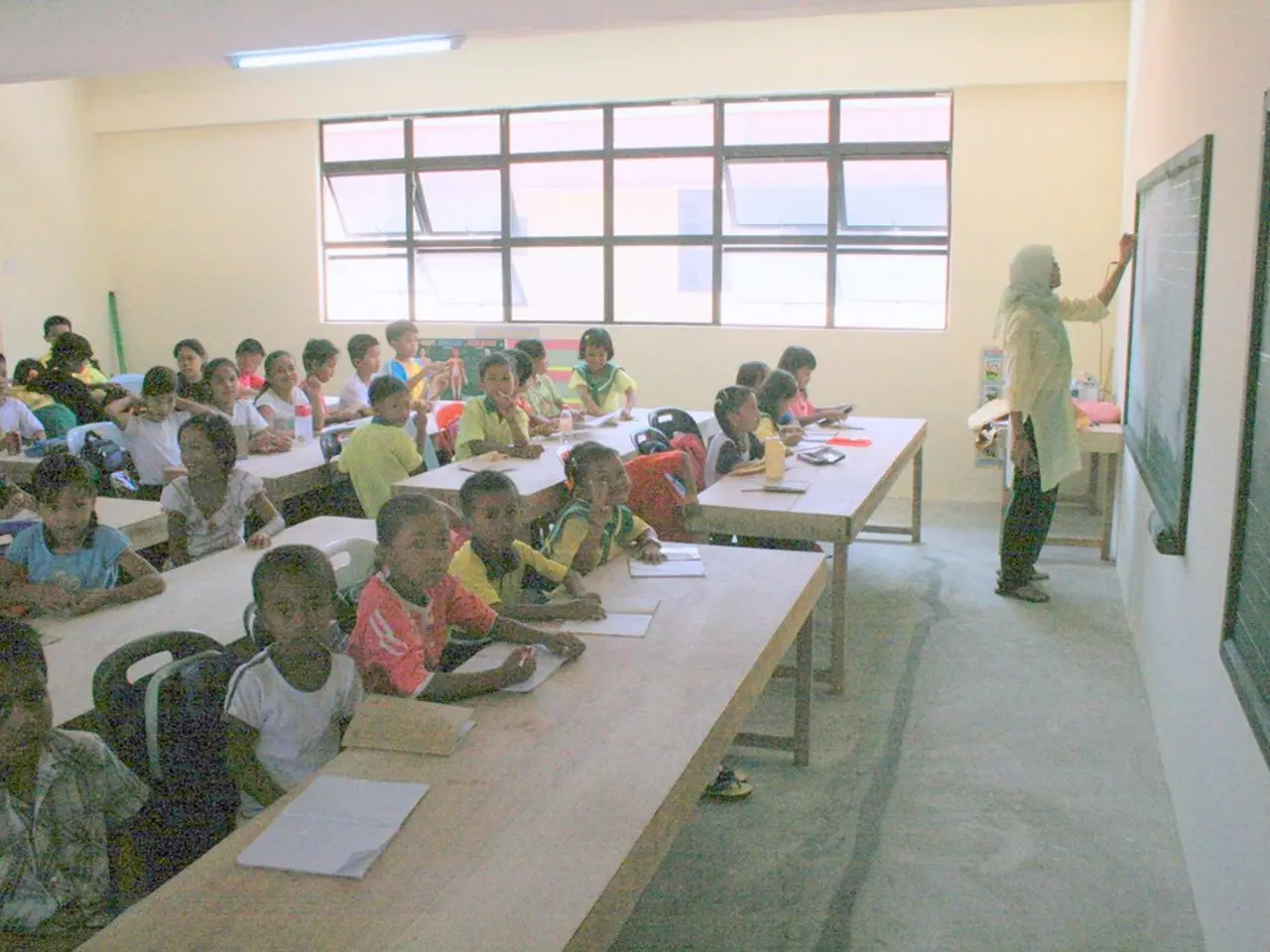Boosting Diversity-Regarded School Environments for Tomorrow's Community
In the modern educational landscape, social inclusion has become a crucial aspect of special education. This approach emphasizes creating an environment where every student, regardless of their background or abilities, can thrive.
Ongoing professional development for teachers is essential in preparing them to address social inclusion effectively. Focusing on inclusive practices and cultural competency, educators can foster friendships, participation, visibility, and respect for all students.
Effective strategies for promoting social inclusion in schools include comprehensive teacher training, implementing collaborative learning activities, involving parents and community members, and regularly assessing social inclusion efforts. These practices collectively mitigate isolation, reduce bullying, and promote a sense of belonging and respect, which are essential for the social inclusion of learners with disabilities in educational settings.
Special educators play a key role by ensuring emotional well-being and social inclusion. Through social skills training, conflict resolution, and group activities, they help learners with disabilities overcome socialization challenges. They also collaborate closely with general educators to adapt curriculum and instruction, thereby providing continuous support.
Collaboration and coordination among teachers, therapists, counselors, parents, and community organizations are also vital. This holistic support and consistent communication help to provide a comprehensive approach to social inclusion in schools.
Implementing flexible, adaptable curricula based on Universal Design for Learning (UDL) principles is another essential practice. Offering multiple ways for all students to engage and express themselves ensures equal opportunities tailored to individual needs.
Positive behavioral supports, focused on reinforcement rather than punishment, help students develop self-regulation skills and address behavioral challenges proactively. Actively involving parents through regular meetings, workshops, and inclusive events strengthens support networks and planning for children with special needs.
Social inclusion cultivates a sense of belonging that is fundamental to students' emotional and social development. It contributes to reduced stigma and discrimination by fostering a greater understanding of differences. Quantitative measures, such as attendance rates and participation in school events, provide insight into student engagement within the school community.
Technology plays a vital role in facilitating social inclusion, with digital tools enabling personalized learning experiences and integrating assistive technology in classrooms to foster participation and engagement for students with disabilities or learning differences.
Educational policies, such as the Individuals with Disabilities Education Act (IDEA), mandate that schools provide free appropriate public education to students with disabilities and emphasize the necessity for integrating these students into general education settings. Adhering to these legal standards not only improves social inclusion in schools but also enhances community awareness and acceptance of diverse learning needs.
Feedback from students and teachers serves as a valuable metric in assessing social inclusion in schools, providing insights into classroom dynamics and student interaction. Surveys and questionnaires designed to capture student perceptions of inclusion can reveal students' feelings of belonging and highlight any existing barriers, thus serving as a basis for improving social inclusion in schools.
In conclusion, social inclusion in schools is essential for fostering an environment where all students can thrive. By following best practices and implementing effective strategies, we can ensure that every child has equal opportunities to participate in every aspect of school life, nurturing not just academic achievement but also vital life skills like resilience and cooperation.
- Teachers can enhance e-learning platforms to promote teamwork skills among students and foster a sense of community, which aligns with the goal of social inclusion.
- Social-media platforms can serve as tools for fostering professional development among educators, allowing them to share best practices, resources, and ideas related to education-and-self-development.
- As students increasingly engage in online learning and social activities, it's crucial for them to develop responsible digital citizenship skills, promoting a healthy balance between entertainment and education.




